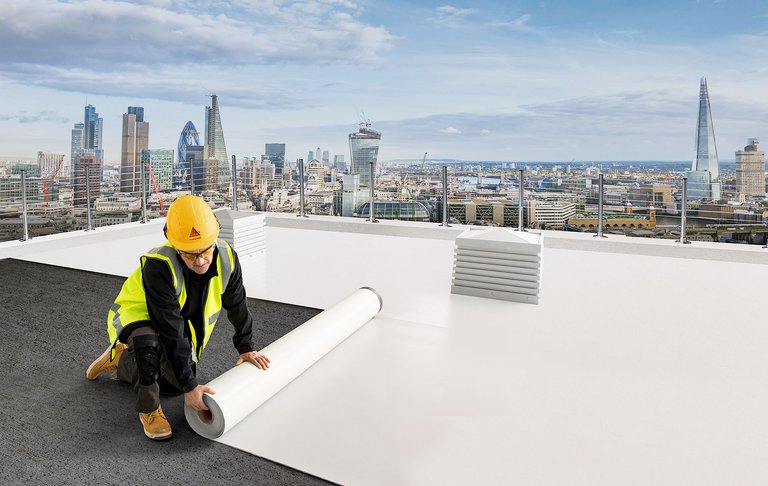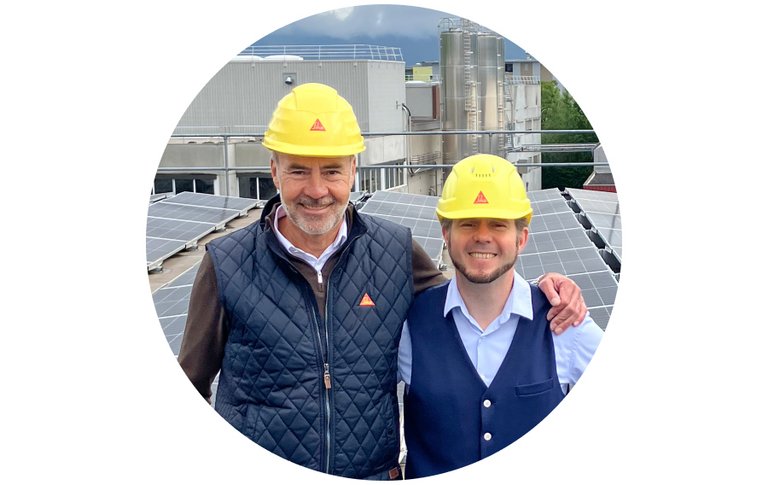
Innovations The smart roof that heals itself
Modern flat roofs are remarkably versatile: they can serve as rooftop gardens, terraces, or spaces for recreation. They must also be robust enough to support technical installations and withstand extreme weather conditions. As this multi-functionality increases the risk of damage, Sika offers durable protection with an innovative self-healing membrane.
Modern flat roofs go beyond simply protecting buildings from the elements. They serve as platforms for solar panels, air conditioning installations, and greenery, while also safeguarding against extreme weather conditions. However, installations such as solar panels can cause damage to the roof as well as the goods stored inside the building.
Water activates a self-healing process
To address these challenges, Sika launched a highly innovative self-healing roofing membrane in 2024: Sika Sarnafil® AT FSH. FSH stands for Felt Self-Healing – felt is the material commonly used as an underlayment in roofing systems. When a puncture from a weather-related impact such as hailstorms or man-made damage like drill holes occurs, the innovative felt side of the polymeric sheet autonomously seals the damage. The result is additional protection against water damage, fewer repair costs, and an extended roof lifespan. In addition, the roof membrane is highly resilient against extreme weather conditions. Sika’s self-healing membrane offer the perfect solution for buildings such as hospitals, museums, and data centers, where critical and valuable assets require optimal protection.
Exceptionally positive reception
The product has been extremely well received by the market. “The feedback has been exceptionally positive, with customers praising the combination of flexibility, ease of application, and durability,” says Reto Gränicher, Head of Corporate Product Management Roofing for Sika.
Certified Circularity
Sika is advancing material reuse through recycling programs, including the collection of old roofing membranes. These membranes are broken down into granulate, which is then used to produce new membranes. Customers receive a new roof covering that may even contain a portion of their old membrane. “Recycling roofing membranes can help companies meet their CO2 reduction targets,” says Christoph Fäh, Corporate Technology Head Thermoplastic Systems.
In the USA, 36,000 tons of roof membranes have already been recycled, reducing over 120,000 tons of CO2 emissions. In 2024, Sika extended its efforts to the EMEA region, recycling 50 tons of thermoplastic roofing, saving an additional 150 tons of CO2. By employing state-of-the-art recycling methods, Sika ensures that roofing materials are repurposed, instead of discarded.

With 20+ years at Sika, Reto Graenicher manages Roofing solutions and the Sarnafil AT line with Robert Roskamp, who began his R&D journey 10 years ago on this very project.
